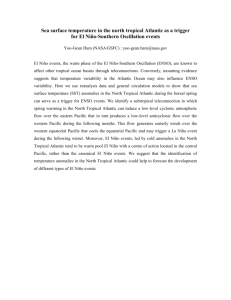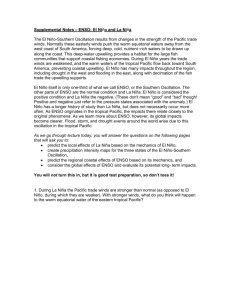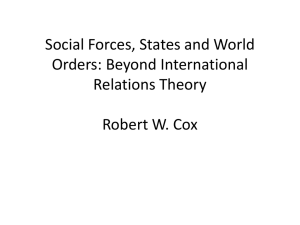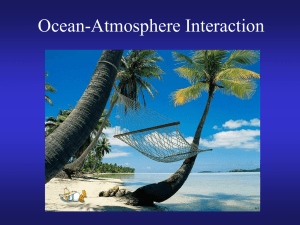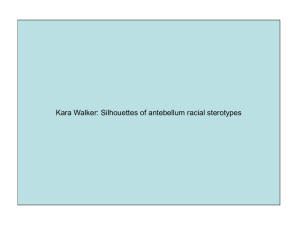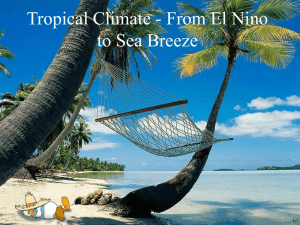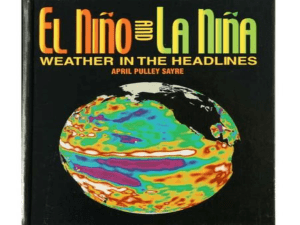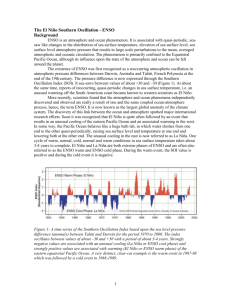Ben-Walker Circulation
advertisement
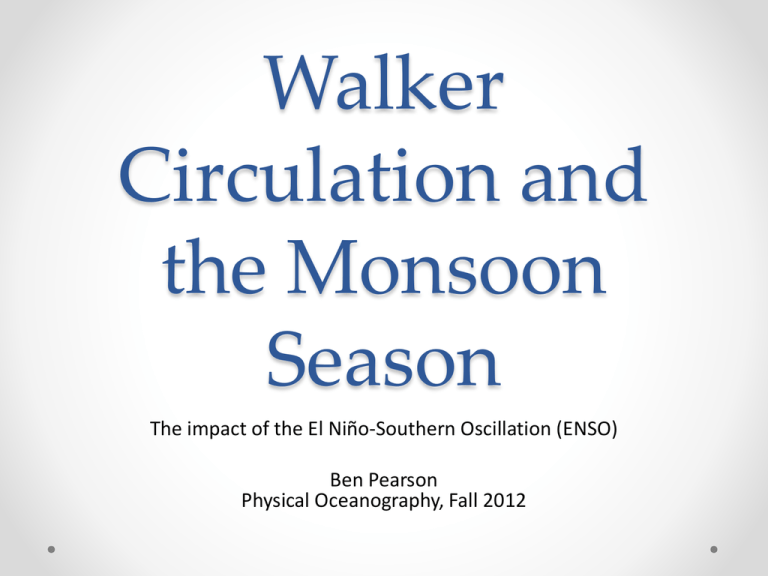
Walker Circulation and the Monsoon Season The impact of the El Niño-Southern Oscillation (ENSO) Ben Pearson Physical Oceanography, Fall 2012 Walker Circulation • The Walker circulation is the result of a surface pressure and temperature difference over the western and eastern tropical Pacific ocean. • Under normal Walker circulation, the tropical western Pacific is warm and wet due to prevailing low pressure system. • The eastern Pacific lies under a high pressure system for cool and dry conditions • An easterly trade wind blows warm water towards the west. • Warm water is piled in the upper ocean of the western tropical Pacific near Indonesia and the Australian continent, up to 60 millimeters higher on the western coast. Figure courtesy of United Nations Environmental Program, GRID-Arendal Maps and Graphics Library; http://www.unep.org/ Walker Circulation Strength • When the Walker circulation reverses every few years, it weakens which causes the wind to also weaken. Warm water of the western Pacific flows to the east. • Under strong Walker conditions, winds are stronger across the Pacific which causes cooler ocean temperature through upwelling that occurs in the eastern Pacific. • The Walker circulation reverses as part of the El Niño-Southern Oscillation (ENSO). o Weak Walker circulation = El Niño o Strong Walker circulation = La Niña • El Niño and La Niña impact the weather in North and South America, Australia, and Southeast Africa, and can cause flooding, droughts, and increases or decreases in hurricane activity. Walker Circulation Reversal El Niño occurs with the combination of relaxed trade winds over equatorial Pacific with an eastward movement of waves, specifically as Kelvin waves. Image Courtesy of Pennsylvania State University http://www.personal.psu.edu/czn115/blogs/meteo241/2010/10/e-portfolio-2.html Global impact • The Walker circulation usually brings areas of low pressure to the western Indian Ocean but, in years when El Niño occurs, this pattern can get shifted eastward, bringing high pressure over India and suppressing the monsoon, especially in spring when the monsoon begins to develop. • India and many other developing countries bordering the Pacific ocean rely on the rainy season and normal strength Walker conditions for a productive agricultural economy and fishing. Image Courtesy of the Australian Government, Bureau of Meteorology http://www.bom.gov.au/climate/enso/history/ln-2010-12/three-phases-of-ENSO.shtml Walker Circulation and ENSO • Prediction of ENSO events could help countries prepare and help avoid negative consequences based on the prevailing weather patterns. • Currently only able to predict weather patterns after on-set of altered circulation. • Positive Southern Oscillation Index tends to yield La Niña conditions while a negative index yields El Niño conditions. • Does Eurasian warming and a southwest shift of the Walker Circulation offset the effect of El Niño on the monsoon season. • Will climate change intensify El Niño or La Niña ? References • Collins, Mat, et al. "The impact of global warming on the tropical Pacific Ocean and El Niño." Nature Geoscience 3.6 (2010): 391-397. • Kumar, K. Krishna, Balaji Rajagopalan, and Mark A. Cane. "On the weakening relationship between the Indian monsoon and ENSO." Science 284.5423 (1999): 2156-2159. • Rasmusson, Eugene M., and John M. Wallace. "Meteorological aspects of the El Nino/southern oscillation." Science 222.4629 (1983): 1195-1202. • Saravanan, R., and Ping Chang. "Interaction between tropical Atlantic variability and El Nino-Southern Oscillation." Journal of Climate 13.13 (2000): 2177-2194. • Webster, Peter J., and Song Yang. "Monsoon and ENSO: Selectively interactive systems." Quarterly Journal of the Royal Meteorological Society118.507 (2006): 877-926.

